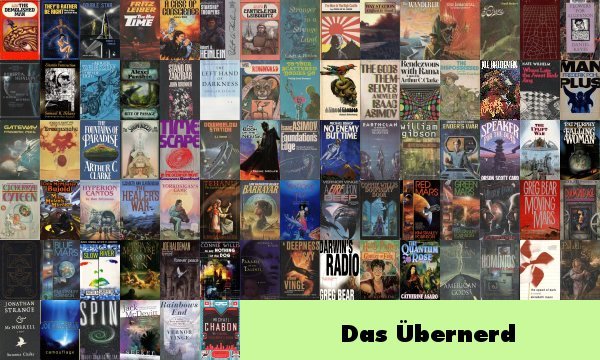 Star Wars
Star Wars1978 Hugo Winner for Dramatic Presentation
Okay, true confession time. I do not like Star Wars. Or to be more specific, I'm not fond of the movie Star Wars and I hate what Star Wars the franchise has become.
I am a member of the Star Wars generation and naturally when I saw it when I was six I was enthralled. And for a while the flashy visuals were enough for me. As I got older the flaws in the film (and I'm not just talking about the acting here) bothered me more and more until around twenty years ago the movie was just a turn off for me. This was still the dark ages when Star Wars was just a movie that had been wildly popular but hadn't gotten a lot of attention since the excitement around Return of the Jedi died down. Then sometime around 1992 the Star Wars nostalgia started building amid the nerds and it completely overran all aspects of nerdiness. I won't begrudge George Lucas for his popular creation but the obsession where so many people feel a need to tie everything back to Star Wars just got under my skin. At this point if I never see another pop culture reference to it I'll be happy.
So in other words don't look to me to comment on the new Clone Wars stuff.
(On that subject let me give those of more evil intentions reading this a helpful hint for brute forcing your way into any system in a tech company: Star Wars. I can't go into details but one of my former jobs required that I helped maintain some secure systems for a company that wasn't particularly secure and over three-quarters of the passwords used by tech-savy people were Star Wars based. If you ever want to bring down the Internet just seed your password checking lists with Star Wars references.)
Star Wars was released just before the 1977 Hugo award voting. Those of you who follow these things way too closely might notice that the previous award was for 1976 and Star Wars won in 1978. The effect of Star Wars's release was to completely overshadow the dramatic presentation award in 1977 so that none of the the nominees (Carrie, Logan's Run, The Man Who Fell to Earth, and Futureworld) were given the award. Instead the film was singled out for a special award in 1977.
So let's get to the movie. A long time ago in a galaxy far, far away a Galactic empire that has been providing strong support for military contractors and reducing unemployment for several planets to near zero thanks to its massive engineering projects is fighting a rebellion. This rebellion wants to tear down the Empire because... well... it's not really stated but this rebellion of slave-owning racists attempt to hold a coup so they can depose the Emperor and replace him with their puppet. These evil rebels steal the plans to one of these engineering projects so that they can perform further acts of terrorism. The plans are delivered to a retired cult leader who immediate recruits a local farmboy with some clever lies. Joining the cultist and farmboy are a drug smuggler and a token minority who everyone treats badly. Eventually the heroic leader of the Empire's military forces catches up with them and in a climactic battle the rebellion kills a few hundred thousand innocent people. Flush with triumph from crime the rebellion gives out medals to the farmboy and smuggler while heaping scorn on the token minority and slaves who helped them.
If there's one thing Star Wars does well it's scope. The science fiction of the 1930's came to life on the screen in more detail than anyone had seen before. The designs were unlike anything seen on the movie screen before but would be familiar to anyone who had seen science fiction art. It doesn't matter that the acting is for the most part wooden, that the script is thin, or that the world building falls apart if you look at it closely; Star Wars is about the visuals.
Not that any of that review really matters. Star Wars is to my generation what King Kong was to my grandparents; it's a key piece of pop culture. In the past few years I have only encountered one person that I know of who wasn't familiar with it. Few works in history could claim to have reached the saturation level of this film. I'm kind of looking forward to seeing how it ages in a world where people have encountered works derived from it before seeing the original.













